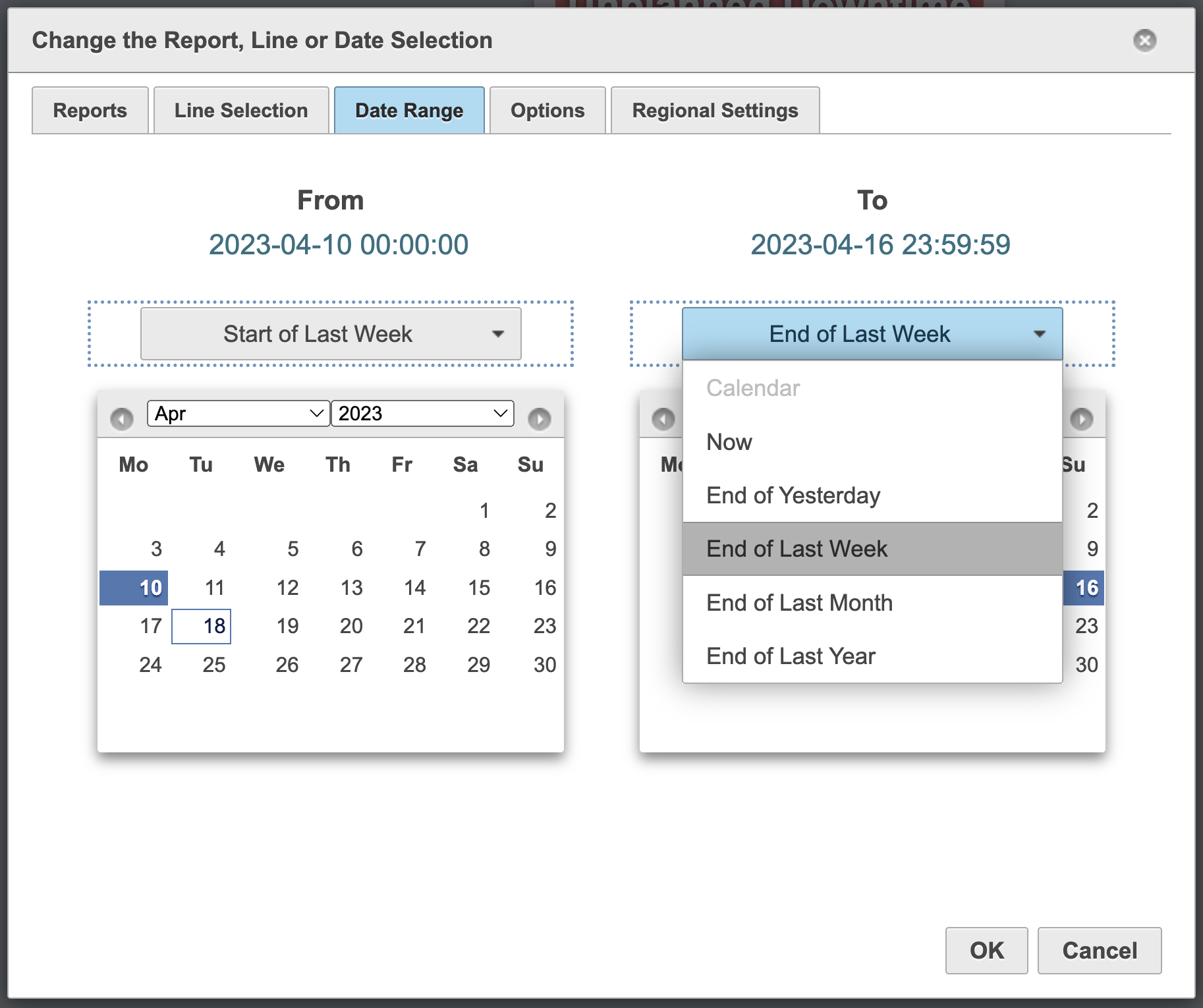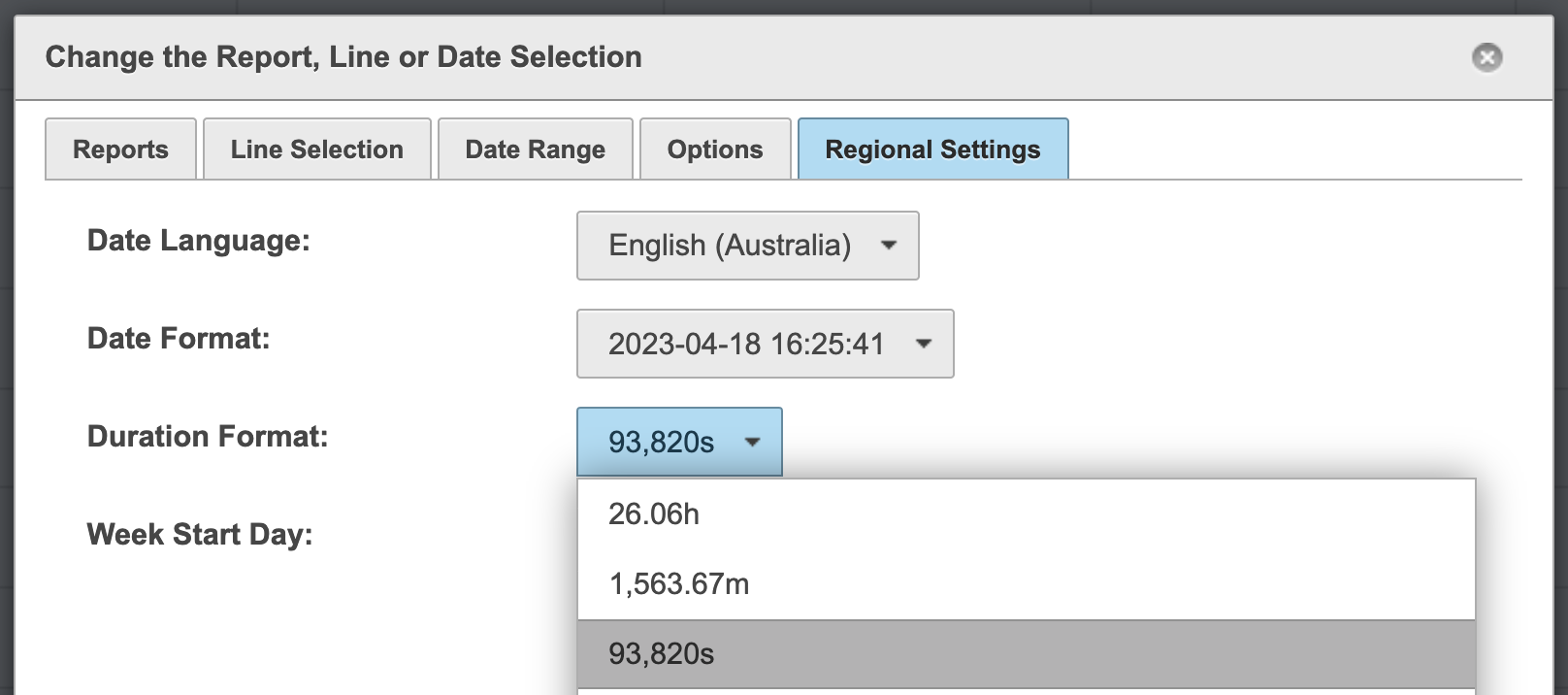OFS Analytics Enhancements - v11 Upgrade
Within OFS v11, we've introduced a few smaller adjustments or new columns to OFS Analytics - find out all the details here
Overview
OFS v11 introduces the following changes to OFS Analytics
Day of Week Start
Within Analytics, it has not been historically possible to define a user-specified day of the week for Calendar Shortcuts or views to start on. OFS v11 introduces a new Option in OFS Analytics to change the default [Monday]:

This setting is only specified for the current user, and is stored locally, so it will need to be established each time OFS Analytics is used from a new computer. Once set, the setting defines how Calendar Shortcuts are applied within the Date Range selection window:

This setting does not override existing data aggregations. Reports aggregated at the "by week" level will continue to be aggregated at Monday to Sunday level. The weekly aggregation period can be overriden by OFS Support - we suggest that you contact OFS support to discuss this change should you be interested.
Mean time to Repair (MTTR)
Mean Time to Repair is a new column introduced in OFS v11.

Mean Time to Repair is defined as:
- MTTR = Unplanned Downtime (total time) ÷ Unplanned Downtime Events
This new column is available in all Summary Reports, the Line Bubble and Product Bubble Charts.
Seconds Duration Format
A "seconds" duration format has been added to OFS Analytics from v11.3, allowing time format data to be reported as a number of decimal seconds.

OFS Analytics Bug Fixes
Within OFS v11, OFS have also fixed a variety of Analytics Bugs:
Export Data Limit
- Generating exports from OFS requires data to be sent back from Analytics in the Client Browser to the OFS Server. In some circumstances, OFS reports can exceed the previous default maximum content size. In OFS v11.4 the limit was increased to 64MB to significantly reduce the likelihood of hitting this limit.
Flow Manager Columns
- Within the Analytics -> Flow Manager report, the defaults for this report cause all columns to start "selected", resulting in a large number of columns appearing. OFS have fixed the bug which caused this unexpected behavior in v11.4.